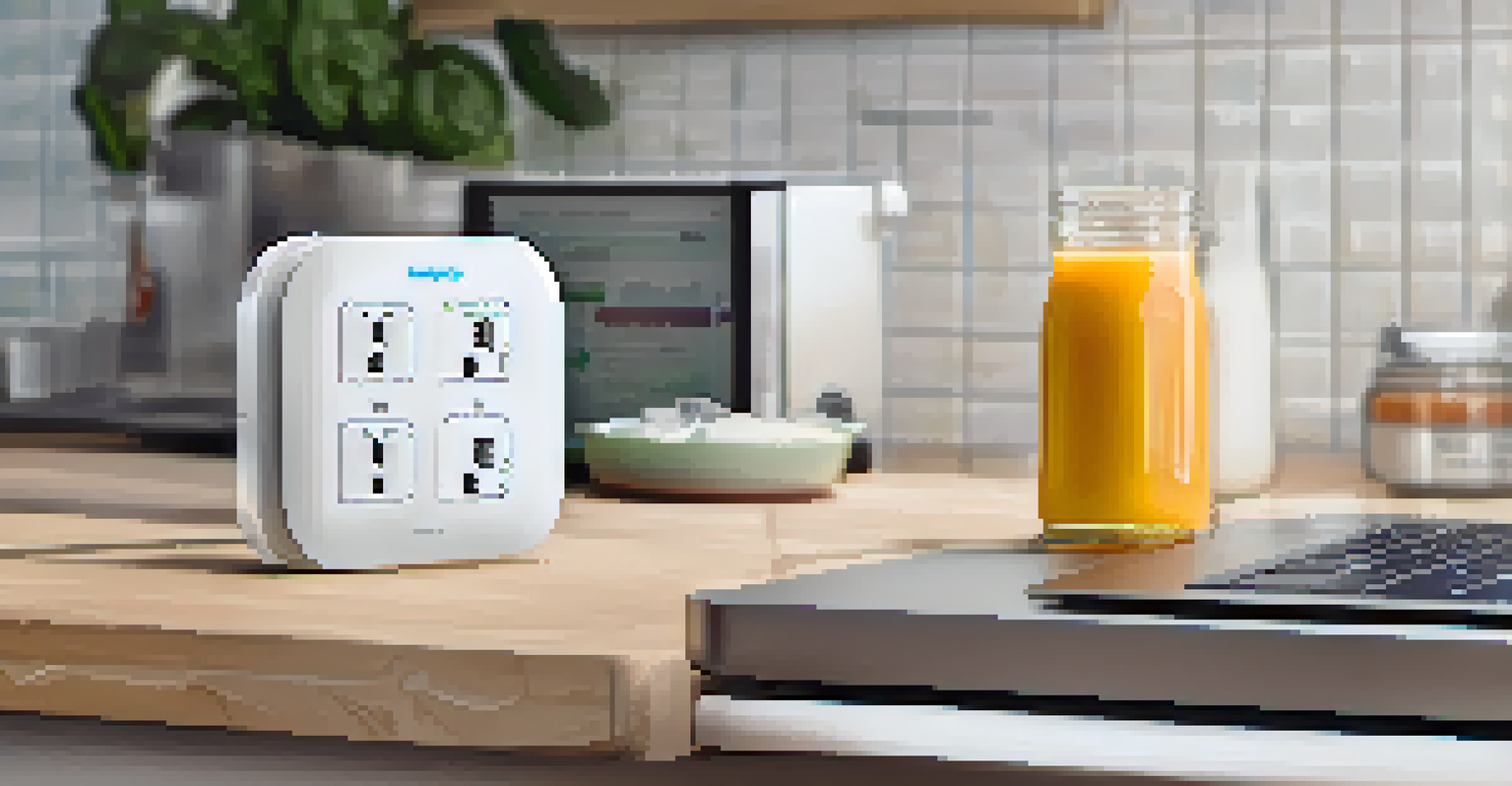IoT in Energy Management: Optimizing Consumption and Savings

Understanding IoT and Its Role in Energy Management
The Internet of Things (IoT) refers to a network of connected devices that communicate with each other to share data. In energy management, IoT devices help monitor and control energy usage in real-time, making it easier to identify inefficiencies. For instance, smart meters provide detailed insights into energy consumption patterns, which can highlight when and where energy is wasted.
The future is already here – it's just not very evenly distributed.
By leveraging IoT technology, businesses and homeowners can gain visibility into their energy consumption, enabling them to make informed decisions. This data-driven approach allows for better management of energy resources, ultimately leading to cost savings. Imagine being able to see your energy usage in real-time and adjusting your habits accordingly; that's the power of IoT.
Moreover, IoT devices can automate energy-saving measures, such as adjusting heating and cooling systems based on occupancy and weather conditions. This not only optimizes energy consumption but also creates a more comfortable environment for occupants. In essence, IoT is transforming the way we think about and manage energy.
Key IoT Devices for Energy Optimization
Several IoT devices are instrumental in optimizing energy consumption. Smart thermostats, for example, learn user preferences and adjust temperatures automatically to maintain comfort while conserving energy. These devices can lead to significant savings on heating and cooling bills, making them a popular choice for both homeowners and businesses.

Smart lighting systems are another excellent example of IoT application in energy management. By using motion sensors and timers, these systems can ensure that lights are only on when needed, reducing unnecessary energy expenditure. This not only saves money but also contributes to a more sustainable environment.
IoT Enhances Energy Management
IoT technology provides real-time insights and automation to optimize energy consumption for both businesses and homeowners.
Additionally, smart plugs and energy monitors allow users to track the energy usage of individual appliances. By identifying energy hogs, homeowners can make adjustments, such as using energy-efficient models or changing usage habits. These devices empower consumers to take control of their energy consumption like never before.
The Benefits of IoT in Energy Savings
Implementing IoT in energy management comes with numerous benefits, primarily centered around cost savings. For businesses, reducing energy consumption directly translates to lower utility bills, which can significantly impact the bottom line. Moreover, improved energy efficiency can enhance operational performance, allowing resources to be allocated more effectively.
It's not about ideas. It's about making ideas happen.
In residential settings, homeowners can enjoy reduced energy costs while also contributing to environmental sustainability. By using IoT devices, they can lower their carbon footprint and support global efforts to combat climate change. This dual advantage makes IoT an appealing choice for eco-conscious consumers.
Furthermore, IoT systems often come with predictive analytics capabilities, which help organizations anticipate future energy needs. By analyzing historical data, businesses can make informed decisions about energy procurement and usage, ensuring they are always one step ahead. This proactive approach not only saves money but also fosters a culture of efficiency.
Challenges in Implementing IoT for Energy Management
While the benefits of IoT in energy management are compelling, there are challenges to consider. One major hurdle is the initial investment required for smart devices and infrastructure. Although these costs can be recouped through energy savings over time, some businesses may hesitate to make that upfront investment.
Data security is another concern. With a multitude of connected devices, the risk of cyberattacks increases, potentially compromising sensitive information. Organizations must implement robust security measures to protect their data and ensure the integrity of their IoT systems.
Smart Devices Drive Cost Savings
Implementing IoT devices like smart thermostats and energy monitors can significantly reduce energy costs and enhance efficiency.
Lastly, the integration of IoT devices with existing energy management systems can be complex. Companies may struggle to find compatible solutions or may require additional training for staff. Overcoming these challenges is crucial for realizing the full potential of IoT in energy management.
Future Trends in IoT and Energy Management
The future of IoT in energy management looks promising, with several emerging trends on the horizon. One significant trend is the increasing use of artificial intelligence (AI) to enhance IoT capabilities. AI can analyze vast amounts of data collected by IoT devices, allowing for more precise energy predictions and optimized consumption strategies.
Another trend is the growth of renewable energy integration with IoT systems. As more households and businesses adopt solar panels and wind turbines, IoT can help manage the energy produced and consumed from these sources. This integration not only supports sustainability but also promotes energy independence.
Additionally, advancements in machine learning algorithms will continue to improve the efficiency of IoT devices. As these technologies evolve, they will provide even more sophisticated insights into energy usage, enabling users to make smarter, data-driven decisions. The future is bright for IoT in energy management, promising increased efficiency and savings for all.
Real-World Examples of IoT in Energy Management
Many organizations are already reaping the benefits of IoT in energy management. For instance, companies like Siemens have implemented smart building technologies that optimize energy use in real-time. By continuously monitoring energy consumption, these systems can automatically adjust settings to ensure maximum efficiency.
Another example is the use of IoT in smart cities, where interconnected devices manage everything from street lighting to traffic signals. Cities like Barcelona have adopted smart solutions to reduce energy use and improve the overall quality of life for residents. These initiatives demonstrate the scalability of IoT technology in addressing energy challenges.
Challenges in IoT Adoption
Despite its benefits, challenges such as initial investment and data security can hinder the successful implementation of IoT in energy management.
On the consumer side, Nest's smart thermostat has revolutionized home energy management. Users can control their heating and cooling systems remotely and receive insights into their energy consumption. This not only helps save money but also encourages more mindful energy usage among homeowners.
Getting Started with IoT for Energy Management
If you're interested in optimizing your energy consumption with IoT technology, the first step is to assess your current energy usage. Understanding where and how you consume energy will help you identify the best IoT solutions for your needs. This could involve reviewing your utility bills or using energy monitoring tools.
Next, consider which IoT devices align with your goals. Whether you’re looking for smart thermostats, energy monitors, or lighting systems, there’s a device out there that fits. Researching reputable brands and reading user reviews can help you make informed choices.

Finally, don't forget to engage with the data! Once your IoT devices are in place, regularly review their insights and adjust your energy habits accordingly. The more you understand your energy consumption patterns, the better equipped you'll be to make changes that lead to savings and efficiency.